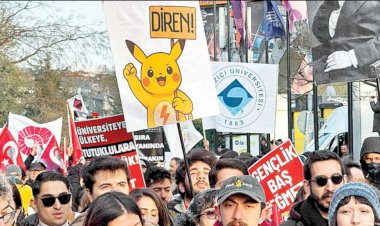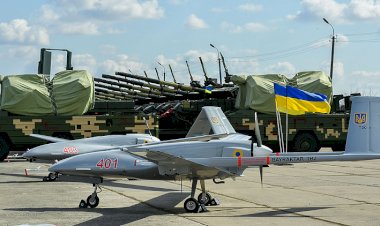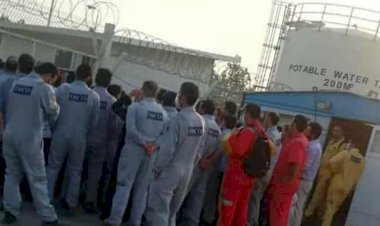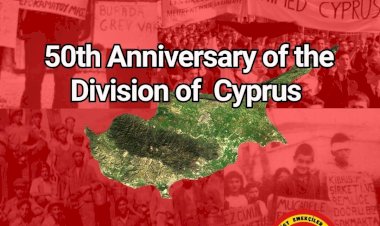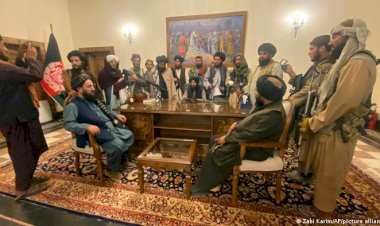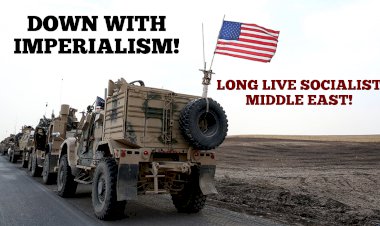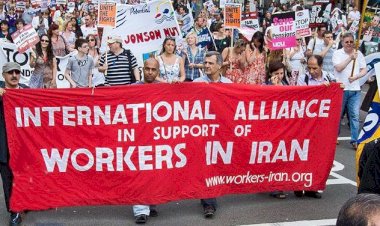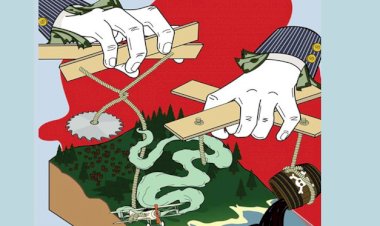Imperialist War on Iran, Latest Developments and Future Prospects
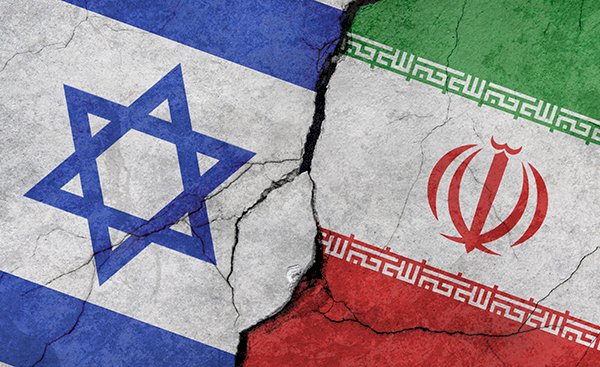
by V.U. Arslan
It was clear that Israel would turn its attention to Iran following its victories in Lebanon and Syria. The anticipated attack began on Friday, June 13. Israel’s strike, much like last year’s Hezbollah offensive, delivered a shock and inflicted heavy losses on Iran’s command structure. Additionally, several of Iran’s top nuclear scientists were killed in their sleep at home. Although the Iranian regime, and indeed the whole world, knew about the Israeli attack days in advance, it became clear that Iran had not made the necessary defensive preparations. Thanks to Mossad’s extensive intelligence network inside Iran, Israel identified and marked critical targets, executing the attack in the most devastating way possible. Yet the pinpoint assassination of Hamas leader Ismail Haniyeh in Tehran in July 2024 had already demonstrated Israel’s capabilities. But it turned out that Iran had failed to take countermeasures against these capabilities developed by Israel. The agents Israel planted inside Iranian society and the state facilitated the targeting of strategic sites. The unpopularity of the regime among the Iranian people presents significant opportunities for foreign powers to infiltrate Iran. The unpopularity of the regime among the Iranian people presents significant opportunities for foreign powers to infiltrate Iran.
Thus, the war began for Iran with several shocking blows. The losses in the command structure prevented Iran from responding immediately. Around 200 fighter jets, including F-35s, swiftly seized air superiority over Iranian airspace. Bunker-buster bombs dropped from these jets targeted underground nuclear facilities like Natanz. With control of the airspace, Israeli F-35s carried out pinpoint strikes using short-range, laser-guided bombs. Mossad had also set up covert kamikaze drone bases within Iran to carry out drone attacks. These systems were particularly employed to weaken Iran’s air defense capabilities. In addition, cyberattacks and electronic jamming were used to cement Israel’s air superiority.
Iran Regroups
After surviving the initial shock, Iran began its retaliatory strikes on Friday night. It is reported that on the first day, Iran launched 200 ballistic missiles and more than 100 drones at Israel in three waves. Similar attacks continued in the following days by Iran, though the number of rockets fired dropped significantly (Reuters, IDF sources). According to official Israeli statements, 21 people were killed and 495 were injured by Iran’s attacks. Because civilians took shelter, casualties were relatively low, but cities like Tel Aviv, Haifa, and Bat Yam experienced significant destruction. It emerged that Israel’s Iron Dome and other multilayered air defense systems were strained and sometimes penetrated by the Iranian attacks. Although Iran targeted Israeli airfields, warplanes, energy infrastructure, military facilities, and weapons factories, these strikes had limited success. First, in addition to Israel’s multilayered defenses, the U.S. and the U.K. are working intensively to bolster Israel’s air defense. Moreover, the high margin of error in Iran’s ballistic missiles makes precision strikes difficult. These strategic targets are located within urban areas, so civilian neighborhoods are often damaged, and Israel uses civilian casualties—with the help of the Western media—to portray itself as the victim.
Missiles: Iran’s Trump Card
Iran’s ability to attack Israel relies solely on ballistic and cruise missiles, as well as drones. The size and sustainability of these stockpiles are key to Iran’s ability to resist. High-volume assaults are necessary to overwhelm Israeli air defenses. In a prolonged conflict, there is a risk that these stockpiles could be depleted within weeks. Moreover, Israel’s ongoing airstrikes are eating into Iran’s missile reserves. It seems unlikely that Iran can close the gap by producing new missiles, due to sanctions and persistent Israeli attacks. Russia, which might have supported Iran, is bogged down in Ukraine and focused on its own survival. China, another potential ally, is not yet capable of intervening militarily in the Middle East. In short, Iran is rapidly consuming its military resources—missiles, expert personnel, and logistics. If Iran loses its capacity to counterattack, it will be entirely at Israel’s mercy. On the other hand, Iran has previously claimed to have developed hypersonic missiles (the Kheibar and Fattah variants.) These missiles could be game-changers, as today’s defense systems—like Iron Dome, THAAD, and Patriot—are designed to intercept traditional ballistic or low-speed cruise missiles. However, whether the Fattah 1 and Fattah 2 hypersonic missiles are fully operational remains unclear.
In summary, if Iran can preserve its existing missile stockpiles and add new ones, the war could drag on, and that would severely strain Israel. A ballistic missile that manages to pierce the Iron Dome and lands a fortunate hit could shift the course of the war. As for hypersonic missiles, for no,w they remain just a claim.
Direct Role of the US
Whether the U.S. transitions from covert support (intelligence, air defense) to direct engagement depends on Israel’s situation. So far, Iran’s attacks have had a greater impact than expected. If things spiral out of control for Israel, the U.S. will not hesitate to intervene directly. They have already begun repositioning aircraft carriers to the Gulf. Iran’s underground depots and mobile launchers complicate Israel’s destruction operations. If the U.S. deploys B-52 bombers to target these facilities, Iran’s missile capability would sustain a major hit. Bunker-buster bombs dropped from B-52s could destroy underground nuclear sites like Natanz and Fordow. Beyond that, U.S. involvement would flip Israel’s partial air dominance, transforming its limited sorties and constrained ammunition into continuous bombardment with unlimited munitions, making it impossible for Iran to respond, and its command chain could collapse.
A Regime Change in Iran?
After Iran’s command echelon was largely destroyed, Netanyahu called on the Iranian public to rise. An Israeli minister later echoed the same call. But when Iran’s counterattack proved effective, Israel abandoned its charm offensive and did not hesitate to kill hundreds of civilians. Israeli Defense Minister Katz openly threatened Iranian civilians, stating, “The people of Tehran will pay the price and soon.” Israeli media claimed that the ruthless doctrine known as the Dahiya Doctrine, targeting civilian populations and infrastructure, would also be applied in Iran (Hayom, via gzt.com). It’s clear that Israeli leaders have accepted that no immediate uprising will take place in Iran. Those in Tehran who can are now leaving the capital en masse. Foreign aggression, framed as national defense, often strengthens the ruling class’s legitimacy, and that is what’s happening in Iran. True, most Iranians dislike the regime, but when Tehran is being bombed and civilians are dying, people won’t take to the streets for regime change. Being under attack temporarily reinforces the ruling class’s legitimacy in the eyes of the public. This has been seen repeatedly in history (for example, the clerics crushing internal dissent during the 1980–88 Iran–Iraq War).
Some draw parallels with Syria, but they overlook a fundamental difference. In Syria, HTS and other jihadist groups, backed by Turkey and Israel, formed a separate armed force with hundreds of thousands of militants. In contrast, the Iranian public is unarmed. Even if they wanted to revolt, what means would they have? Furthermore, the regime is likely to act far more ruthlessly against anyone it accuses of betrayal during wartime. On the other hand, economic collapse after the war could spark new uprisings; Iranian society already harbors rebellious tendencies. But the longer the war lasts, the deeper the scars it will leave on Iranian society and the harder it will be for rebellion to emerge. Even the killing of high-ranking Iranian officials would simply result in their replacements taking over.
Still, if regime change in Iran were orchestrated by imperialism, it would bring no benefit to the people. We can expect disasters: millions of dead in civil wars, ethnic and sectarian massacres, foreign interventions and occupations, imperial plunder, and tens of millions displaced as refugees.
Is Turkey the Target?
This frequently voiced claim seems aimed at reinforcing authoritarian tendencies in Turkey. Let’s flip the narrative: regime change in Iran would lead to chaos, creating a playground for foreign powers. At the forefront would be Azerbaijan, a close ally of Israel. We can expect the Aliyev regime to exploit ethnic conflict and separatist tendencies in Iran to pursue its “Greater Azerbaijan” dream. There are around 20–25 million Azeris in northwest Iran, and some 40 million across the country. In regions centered on Tabriz, Azeri nationalism is particularly strong. The idea of “reuniting a divided nation” resonates with many. Moreover, questions over control of key mixed areas like Urmia (West Azerbaijan province) will fuel ethnic nationalism and strengthen Azerbaijan’s claims. Violence in these areas is highly likely. Such conflicts could pave the way for Azerbaijani intervention. If Iran undergoes a regime change, Armenia loses its biggest regional patron, making it easier for Azerbaijan to act aggressively on issues like the Zangezur Corridor. All these developments would draw Turkey into the Iranian sphere. Specifically, Kurdish autonomy or the reduction of such autonomy could prompt Turkish intervention. Of course, the Kurds won’t act as a single bloc; Turkey will operate on the ground alongside its ally, Barzani. In short, the situation unfolding in Iran could, contrary to claims, expand Turkey’s regional influence. But it must be understood that any weakened nation becomes prey at the imperialist table. The outcome depends on which imperial block you align with, the coherence or corruption of your ruling class, state legitimacy, and socio-economic crises. In short, in the imperialist jungle, things don’t proceed in any set order.
What Is the Real Aim?
The U.S. and Israel want to eliminate Iran, which is the last major center of resistance in the Middle East. If Iran falls after Iraq, Libya, and Syria, the region will become a smooth playground for imperialist powers. The collapse of Iran would also end the headaches in Lebanon, Yemen, and Iraq. No need for a long explanation of Iran’s geostrategic and economic significance. We’re talking about a vast country with the world’s second-largest natural gas reserves (after Russia) and the fourth-largest oil reserves. Iran is a critical energy supplier, especially to Asian markets. This is especially significant for China, the U.S.’s biggest rival. Iran is also a strategic partner in China’s Belt and Road Initiative. About 20% of the world’s oil passes through the Strait of Hormuz, which Iran has the capacity to control. With a population of 90 million, Iran also represents a large domestic consumer market…
That’s why opposing Israeli aggression is today’s most urgent agenda. The working class and youth of the Middle East must elevate their struggle to build an independent class movement against imperialists, local collaborators, dictators, and the forced ethnic/sectarian conflict imposed upon us. This is the only path to liberation.



